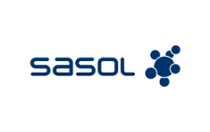The Finance Ghost: Do You Understand Your Sasol Exposure?
Sasol is a highly complicated group. With cyclical exposure to oil and chemicals, as well as the operational challenges dished up by South African infrastructure, volatility is the name of the game. After a terrific pandemic performance as oil prices recovered, holding Sasol going forward is a far less obvious decision.
Twitter (or X, I suppose) is abuzz with news of the Sasol AGM being cancelled due to climate protestors disrupting proceedings. Sasol is many things, but boring isn’t one of them.
The company finds itself at a difficult point in its history that attracts no shortage of criticism. This is very much an old school energy company in its current form, with the Secunda operations as an environmental offender of the highest order. Regardless of how strongly (or not) you feel about ESG in general, there’s a financial impact here that cannot be ignored by investors. A carbon journey is expensive, so even a purely financial lens needs to take this into account.
This is a far cry from the Sasol market analysis that we saw in 2020, when the share price absolutely collapsed and punters climbed in. Many of the institutional experts were wrong, as the company provided exceptional returns to retail investors who recognised that this was an asymmetrical opportunity. In simple terms, this means that the upside potential was substantial compared to the likely downside scenarios and those who executed on that view made a great deal of money.
This made Sasol extremely popular with the new generation of investors who entered the market during the pandemic. Today, Sasol isn’t a turnaround opportunity anymore. The company is now in slow grind mode, recovering from what was very nearly the end of the road for the company. It’s a completely different story to the one that rewarded brave investors in the pandemic.
Have investors come to this realisation and considered their exposure in this context?

Less broken, so less exciting too
Sasol was a once-in-a-lifetime opportunity in 2020. It was the dip of all dips. Many speculative positions work out badly (otherwise they wouldn’t be speculative in the first place), but Sasol worked out very well. After entering 2020 at over R310, the share price lost over 90% of its value as oil prices crashed in the wake of lockdowns and the world literally shutting down. If there’s no activity, there’s no need for oil.
By the end of 2020, it was back at nearly R135. The recovery soon blasted past the pre-pandemic levels, with the share price reaching around R420 in mid-2022. Today, we are back below R230.
It’s been an absolute rollercoaster ride, which explains why retail investors continue paying attention to Sasol. After all, without volatility, there can be no returns. But if we zoom in on 2023, it’s actually been a rather uneventful year for the share price. The first couple of months saw some action, but since then Sasol has been range-bound between roughly R220 and R260 a share. There’s been a decent dividend along the way in 2023 as well, but we can all agree that the 4x-in-one-year days are firmly behind us.
What does this mean for investors?
Be careful of conventional wisdom
In order to justify its position in a share portfolio, Sasol needs to offer a meaningfully more attractive risk-reward opportunity than simply buying the broad market index. This is because single stock exposure is riskier than owning an ETF tracking the index, especially in the energy sector.
To decide whether you want to hold Sasol into the future, you need to have a view on the oil price. Or, do you?
Conventional wisdom tells us that Sasol is highly correlated with the Brent Crude price, given Sasol’s exposure to the oil industry. In simple terms, high correlation means that movements in the oil price should drive movements in the Sasol share price, so the price charts should move together. But here’s the thing: conventional wisdom isn’t as important as data. It’s also important to remember that correlations can break down for periods of time due to market sentiment or other important changes in a business.
As this chart shows, the oil price correlation that drove Sasol’s incredible returns from 2020 to 2022 seems to have broken down:
Source: TIKR, The Finance Ghost

You can clearly see how the charts follow a similar shape (directionally, not in terms of magnitude of the move) from November 2018 (five years ago) to around November 2021. Even though Sasol was dealing with all kinds of things over that period, the market was simply watching the oil price and acting on Sasol accordingly. In case you didn’t notice, the charts are rebased to 100. This means that 145 at the end for $BNO can be interpreted as a 45% price return over five years, in dollars. Similarly, 39 at the end for Sasol means a -61% price return in Sasol over five years, again in dollars.
So, in dollar terms, you would’ve been much better off over this period in a Brent Crude fund than in Sasol itself. And perhaps most importantly, the resilience in the oil price since the end of 2021 hasn’t translated into resilience in the Sasol price.
This means that if you are holding Sasol because you think the dollar oil price is heading higher, then you might end up with a different outcome to what you expect.
Of course, it has to be noted in this comparison that Sasol can pay a dividend, whereas purely buying oil exposure only gives you the price return. It also has to be noted that Sasol’s dividend track record is right up there with the Proteas in world cups, so again there are never any certainties.
So, what are you exposed to with Sasol?
Sasol is a complicated animal.
It is true that the oil price is still a factor, but it isn’t the only factor, as has already been shown above. This is a cyclical energy company that has considerable exposure to chemical markets, which are more than slightly tricky to forecast. I would argue that the chemicals exposure is why correlation to the oil price has largely broken down, leaving Sasol as more of a lottery than a clear view on energy prices.
The company isn’t necessarily a great rand hedge either, not least of all because of exposure to the broader South African infrastructure.
You then have to add in the environmental issues and what this might mean for (1) sentiment around the share price and (2) actual cash costs to reduce emissions.
Trying to guess where Sasol is headed is exceptionally difficult because of the complicated underlying exposures and industry dynamics. It was a spectacular punt in the pandemic. In my opinion, it’s now in the “too hard” bucket and it is quite difficult to see meaningful upside in the near-term on a risk-adjusted basis.

The Finance Ghost does not have any exposure to Sasol.
New to investing and want to know more about the latest research?
Any opinions, news, research, reports, analyses, prices, or other information contained within this research is provided by an external contributor as general market commentary and does not constitute investment advice for the purposes of the Financial Advisory and Intermediary Services Act, 2002. First World Trader (Pty) Ltd t/a EasyEquities (“EasyEquities”) does not warrant the correctness, accuracy, timeliness, reliability or completeness of any information (i) contained within this research and (ii) received from third party data providers. You must rely solely upon your own judgment in all aspects of your investment and/or trading decisions and all investments and/or trades are made at your own risk. EasyEquities (including any of their employees) will not accept any liability for any direct or indirect loss or damage, including without limitation, any loss of profit, which may arise directly or indirectly from use of or reliance on the market commentary. The content contained within is subject to change at any time without notice.
Any opinions, news, research, reports, analyses, prices, or other information contained within this research is provided by an employee of EasyEquities an authorised FSP (FSP no 22588) as general market commentary and does not constitute investment advice for the purposes of the Financial Advisory and Intermediary Services Act, 2002. First World Trader (Pty) Ltd t/a EasyEquities (“EasyEquities”) does not warrant the correctness, accuracy, timeliness, reliability or completeness of any information (i) contained within this research and (ii) received from third party data providers. You must rely solely upon your own judgment in all aspects of your investment and/or trading decisions and all investments and/or trades are made at your own risk. EasyEquities (including any of their employees) will not accept any liability for any direct or indirect loss or damage, including without limitation, any loss of profit, which may arise directly or indirectly from use of or reliance on the market commentary. The content contained within is subject to change at any time without notice.
Subscribe to our Blog
Search all articles
Posts by topic
- Market News & Events
- Easy Community
- Education
- Dividends Update
- Exchange Traded Funds (ETFs)
- Managed Bundles
- Property Investing
- USD Wallet
- Retirement Annuity (RA)
- Cryptocurrency
- Tax Free Savings Account (TFSA)
- International Investing
- Unit Trusts
- New to Investing
- Artificial Intelligence
- EasyProtect
- Shares
- EasyCredit
- Government Bonds
- New Listings
Let Us Help You, Help Yourself
From how-to’s to whos-whos you’ll find a bunch of interesting and helpful stuff in our collection of videos. Our knowledge base is jam packed with answers to all the questions you can think of.


